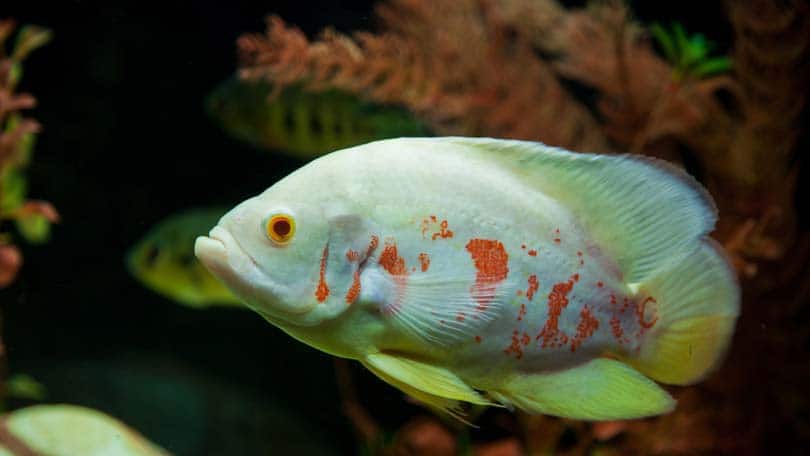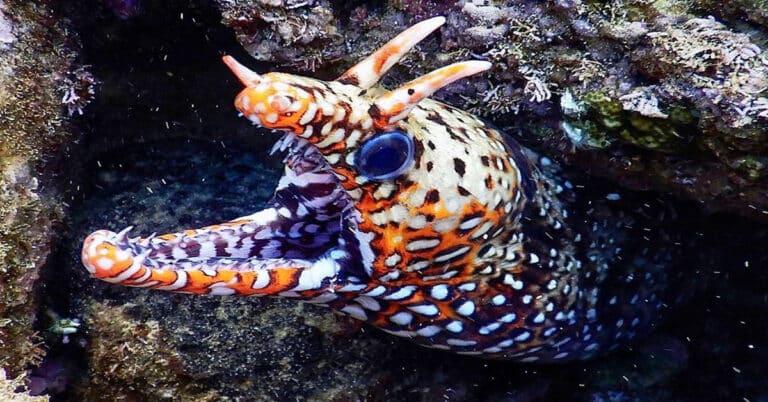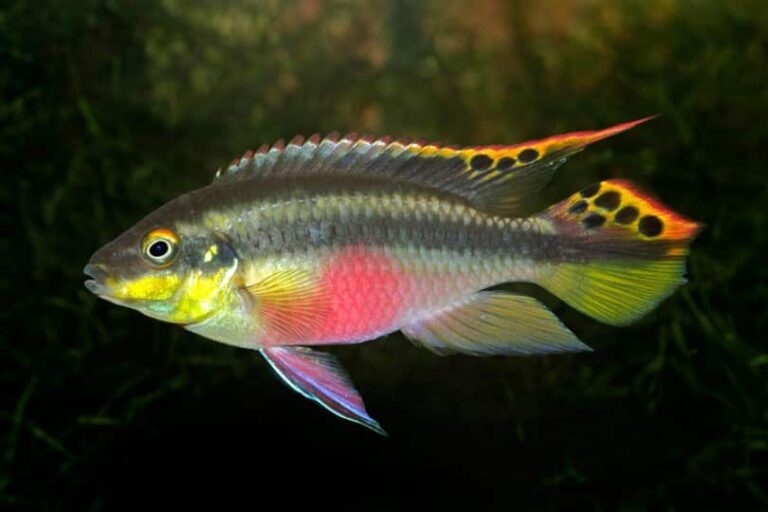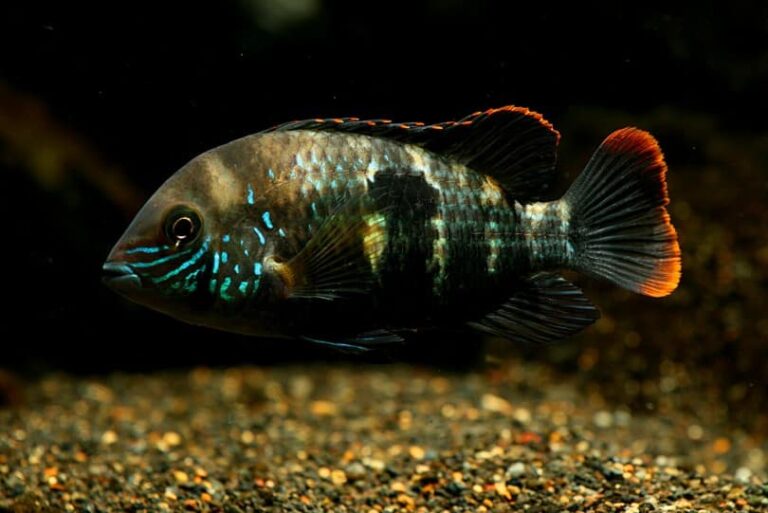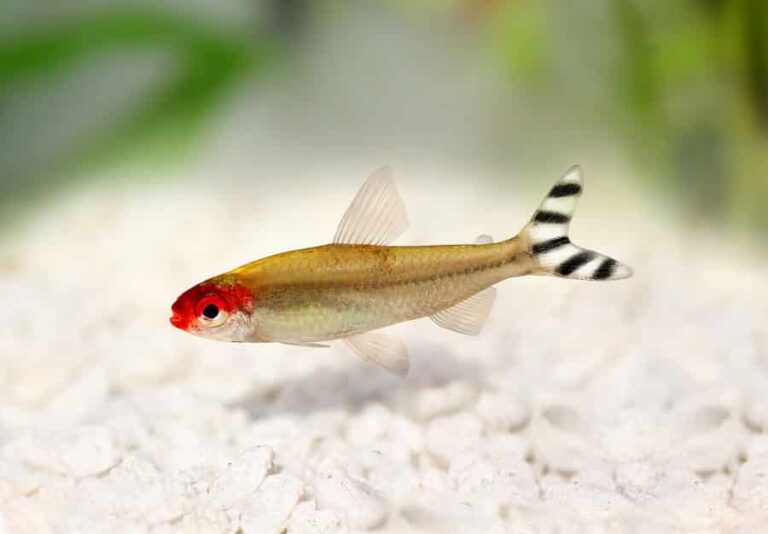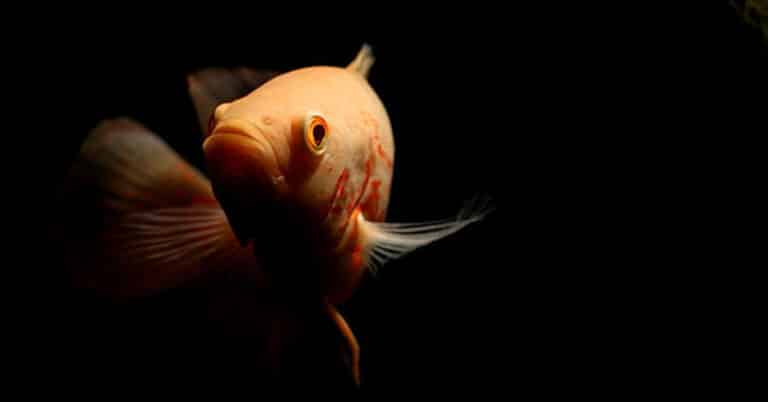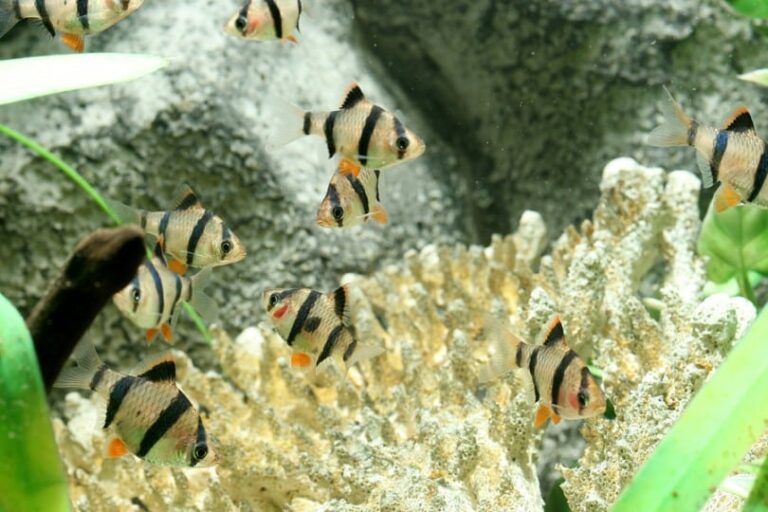Aquarium pH Level
The aquarium PH level is very important when determining the quality of your aquarium water. PH refers to the concentration of hydrogen ions in the water. It is a scale ranging from 0 to 14. Zero is acidic, while 14 is basic or alkaline. A pH reading of 7 is considered neutral. Most tropical fish thrive at a pH of somewhere between 5.2 and 9.2; specific species have narrower requirements. Over time, your fish will become accustomed to an even narrower pH range based on the tap water in your area.
Most pet stores are willing to test the pH of your tap water. Many aquarium test kits also include the ability to test pH yourself at home. The water should be checked at least weekly to ensure stable levels, not only of pH but also of other measurements of your water quality, such as ammonia.
Choose your tropical fish based on the pH of your tap water. Select a species that is suitable for the water you regularly use; this is much easier than constantly trying to adjust the pH of your water. Most tropical fish can adapt to a fairly wide range of conditions, including most pH measurements you would be likely to find in tap water. A few cannot adapt well, including Amazonian fish, which are used to alkaline water. These include the discus and the angel fish.
Live plants tend to thrive in lower pH conditions, or around 6.2 to 6.8. Community or semi-aggressive tropical fish enjoy a pH range of 6.8 to 7.8. South American cichlids like a lower pH environment, or around 6.0 to 7.0, while African cichlids like higher pH aquariums, at around 7.4 to 8.0.
The pH requirements for different species of fish are generally a result of their natural environment; a good rule of thumb is to mix species that originate from the same continent, because they are likely to have similar water requirements. As you can see, most fish will tolerate a midrange pH, though if your tap water is significantly higher or lower than 7.0 (neutral) you may need to take this into account when choosing your fish species.
PH, alkalinity (Kh) and water hardness are all interrelated. kH, or carbonate hardness, is a measurement of the buffering capacity. That is, how much the pH is apt to change over time. If you have low kH, you can expect to see wide swings in the pH of your water. With high kH, the pH measurement should stay relatively constant. It is generally more important to have a stable pH, meaning a high kH measurement, than the perfect pH number.
KH is essential to the health of goldfish, African cichlids, and brackish fish, though it is important for any tropical fish you may wish to keep. Baking soda is often used to adjust the kH numbers. Other choices for stabilizing kH in your aquarium include calcium-based products, like calcium carbonate designed particularly for aquarium use. If your kH level remains very low, look into the possible causes. A large amount of decomposing organic material, such as a dead plant in your tank, can reduce the pH and kH of the tank.
To attain a stable and healthy pH for your fish, there are a few additive products available, but these should be used sparingly if at all. pH additives will adjust pH, but not the buffering capabilities, meaning your pH is likely to swing wildly. If you do decide to adjust the pH in your tank to make it healthier for the fish you have chosen, it is only safe to adjust by 0.2 points per day until it attains the desired level.
Do not be deceived by the relatively small change of 0.2; this is actually a very significant change in the acidity of your water. However, unless you have a finicky fish species, are trying to get your fish to breed, or have specific varieties of live plants, there is no reason to adjust it.
Besides chemicals, the pH can also be changed naturally using different substrates on the bottom of your tank. Driftwood, peat moss, plants, and other organic décor will release acids, lowering the pH. Porous calcium/rock substrate, calcium carbonate sand, lava rock, sandstone, or similar substrates will naturally increase the pH in your aquarium.
Maintaining a consistent pH in most aquariums is relatively easy with regular water changes. Generally, if your tank goes too long before changes, it will be ammonia and nitrites that start to affect your fish first, not pH. When you test your water, pH is usually one of the readings. It is nearly always within the normal range unless all of the other readings are poor as well.
Maintaining pH in a saltwater aquarium is a whole different story. These tanks need a much higher pH (above 8.0), which requires additives since tap water is almost never this alkaline. A low pH will lead to algae growth in saltwater tanks; it will also reduce new coral growth. To maintain pH in a saltwater aquarium, you’ll need to ensure good water flow, and adequate numbers of fish.
In a saltwater tank a good rule of thumb is one inch of fish for ten gallons of salt water, while freshwater tanks can handle up to one inch of fish for every gallon of water. Chemical additives are often recommended for saltwater tanks to hold the pH steady. Special gravel called aragonite, usually made from crushed coral, can increase and maintain the pH of a saltwater tank.
Rapid changes in pH are quite stressful to your fish, even within the acceptable pH range for the species. Your fish will adapt to the narrow pH range of your tap water; adding new water from a different source can be quite a shock. When doing water changes, only change 15-25 percent of the water at a given time. This will ensure that the water qualities do not change drastically as you add the new water. This will help your fish remain happy and healthy.

Having discovered a fondness for insects while pursuing her degree in Biology, Randi Jones was quite bugged to know that people usually dismissed these little creatures as “creepy-crawlies”.

